Each subway line has a set of tracks, for example one for east-bound trains and one for west-bound trains. The platforms for subway lines are either located between the two sets of tracks; so there are sets of doors on your left for east-bound trains and sets of doors on your right for west-bound trains. This is the easier design and it is easy to turn around and wait by the other sets of doors if you first made a mistake.
It is more confusing when there are two very separate platforms separated by a hallway and several sets of stairs. In those cases, you’ll see signs telling you to go separate directions for separate platforms. These are usually posted soon after entering the paid area of a subway station. The signs at those locations don’t necessarily tell the next station, but they tend to tell the major stations along the way and frequently the last station of the line. Coincidentally, just right of the pillar shown here is the lost and found office.
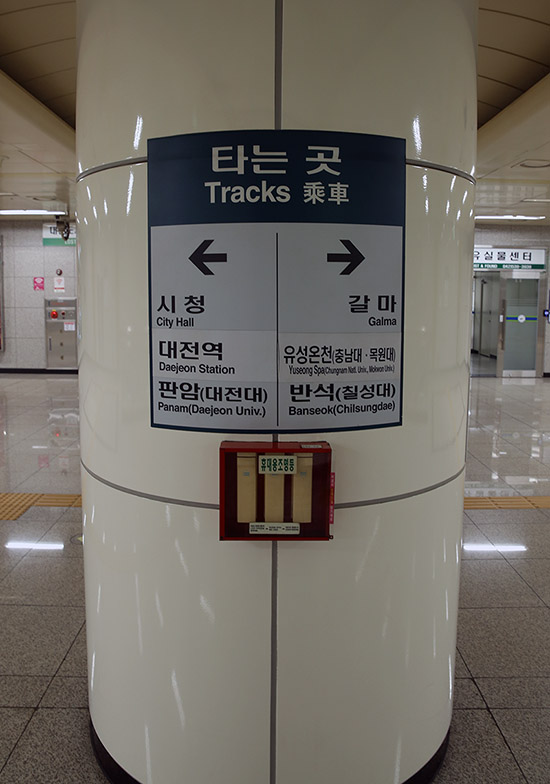
You can also check signs on the walls to see which direction they are going. These signs tell the current station in the middle, the station it was just at in gray scale, and the next station in black.

These signs are also posted above the safety screen doors. They have the same design theme with the current station in the middle, the station it was just at in gray scale, and the next station in black.
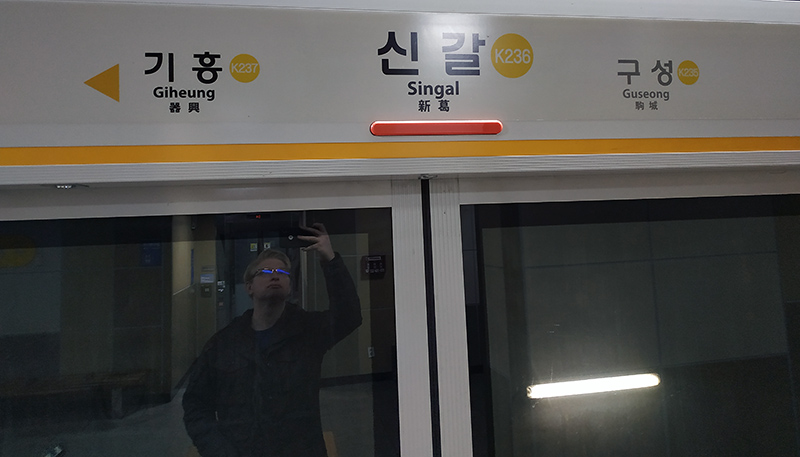
If you are at one end of the line, there will only be the current station and the next station listed.

Many stations have displays that hang from the ceiling that visually show how far away the next train is from you. Here we see three sets of words; 전전역 meaning the previous previous station, 전역 meaning the previous station, and 당역 which means this station. Some signs are digital displays and if there is an express train, such as on Line 9 in Seoul, the color will be different.

You may need to make a transfer within the subway system in order to get to your destination. There are several kinds of signs to help guide you towards your transfer. In this first image we see a large sign on a pillar. Unseen in the image, is a staircase behind the pillar. This is why the arrow curves as it is indicating not to take the stairs, but to instead go around them and keep going straight.
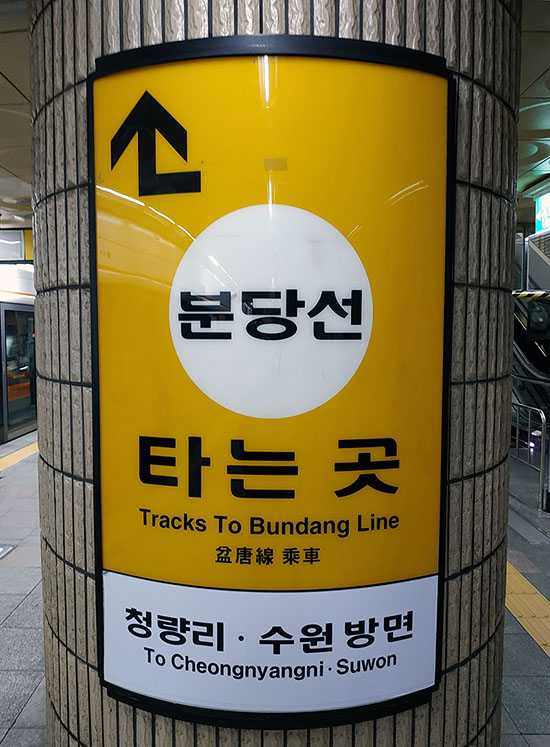
Less common are signs built into the floors themselves. As this is a simple straight arrow, it just means to go straight ahead. Depending on the transfer, you may need to go up or down stairs and there are usually elevators for people with mobility issues or those traveling with heavy luggage.
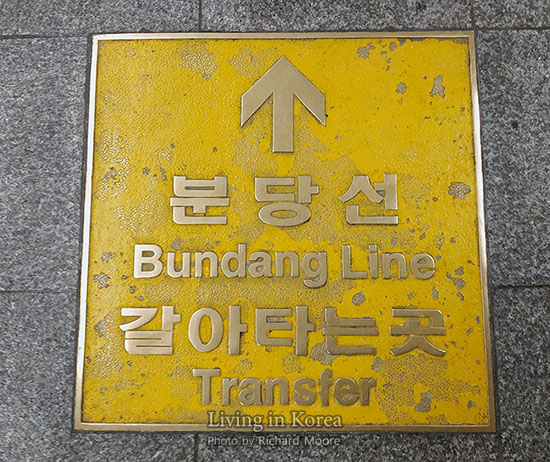
Those first two examples were from the Bundang Line in Seoul but these next two images are form the Daegu subway system. These very long lines help to get people around the twists and turns of the station to make their transfer. The red is Line 1 and is written in the metal sign. The adjacent green line is for Line 2.

If you look closely at the metal signs, you’ll notice they have several arrows. If you are traveling in the direction of Daegok, you’ll go to the left. If you are traveling in the direction of Ansim, you’ll go to the right. This can be confusing as it would make more sense for both platforms to be next to each other instead of heading to separate parts of the station. This is more common with older subway lines as ease of transfers were not a high priority in the past. This has changed with later lines.

Here is an example from Seoul Station, which is a little confusing as the structure above ground is for trains which the structure below ground and under the street is for subway lines. This picture is from within the train section and shows the lines which lead outside to the underground subway station. The main subway lines are out this direction while the AREX airport line is actually the opposite direction as it is under the train station.
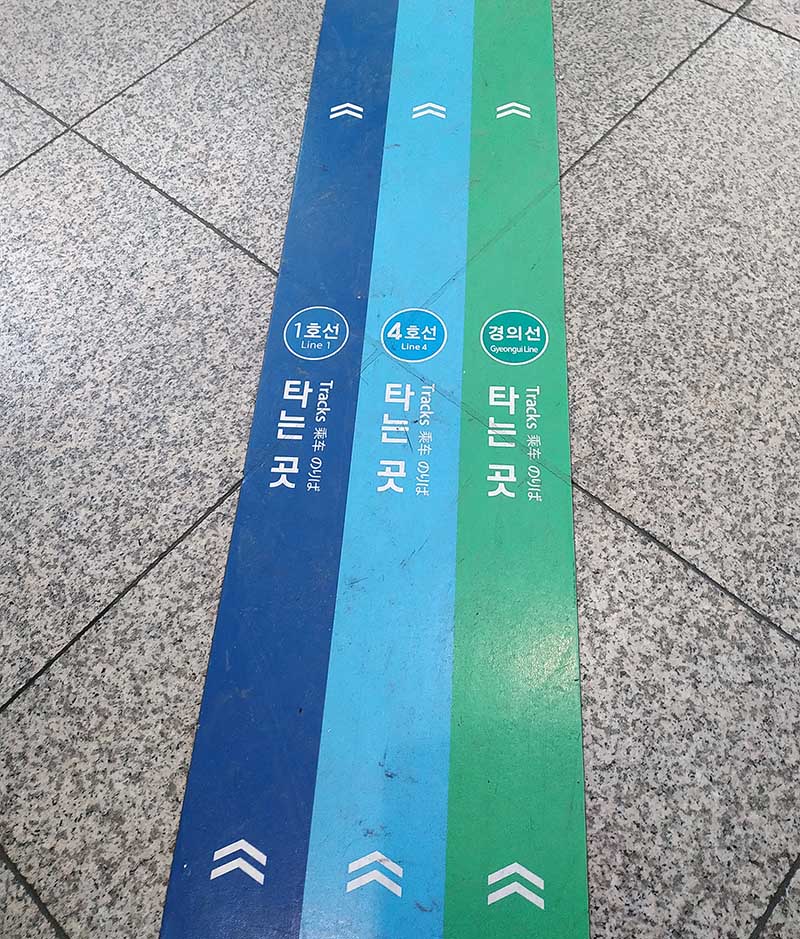
If you want to save time on your travels, learn the best car to ride in to make your transfer faster. This is more helpful during rush hour as there will be a solid group of people trying to exit and/or transfer at the same time. To learn which car and which set of doors would be most advantageous for your transfer, check to see if the station you are at mentions this on one of their route maps. Rather rare, but very useful when presented.
The example shown here is from the Seoul subway system on Line 4. We can tell Line 4 as each station starts with four. The number on the blue line tells how long of travel time until we reach that next station, and the number next to the downward arrow tells us which set of doors to line ourselves up with.
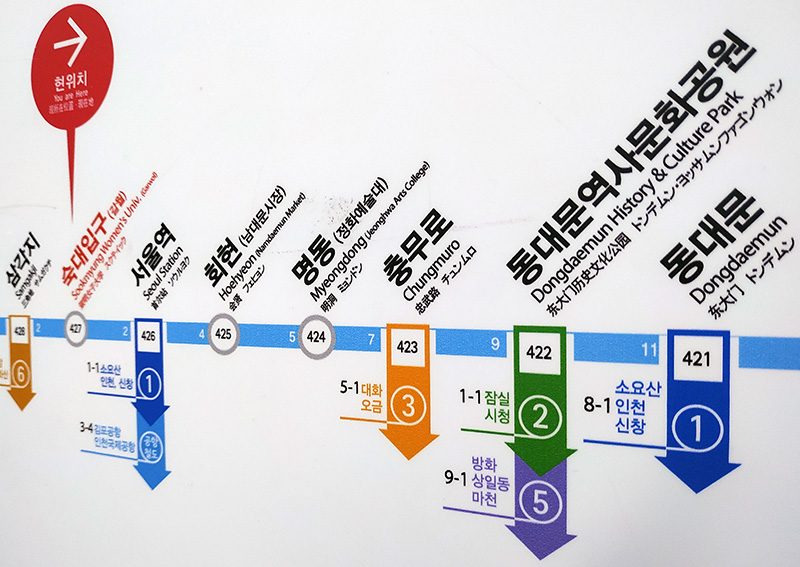
For example, if we want to transfer to Line 2, we need to exit the car at Dongdaemun History & Culture Park and be as close as we can be to doors 1-1. But if we want to transfer to Line 5 at that same station, we’ll need to go towards doors 9-1. And the 9 we see right before our transfer station lets us know we will ride the train for 9 minutes before reaching that station.